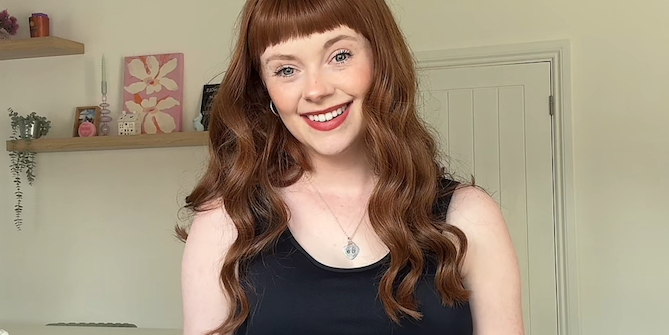“My postpartum belly went viral — it’s time we normalise stretch marks”

After a difficult pregnancy, which saw her grieving the loss of her mother while dealing with extreme morning sickness, influencer Caitlin Sheil was overjoyed to welcome her baby daughter this April. Lyla is Caitlin’s second child with her wife, Leah Sheil, and the pregnancy marked the first time Caitlin carried one of their children.
In the weeks since, she’s shared several candid videos about her postpartum experience on social media — a move that won’t surprise the millions of people who follow the couple’s joint TikTok account @caitlinandleahh, where they regularly document family life. What has been shocking, though, is the response to Caitlin’s videos about her postpartum body.
Among the well wishes from fellow parents, many of whom found it refreshing to see a woman celebrating her stretch marks, were callous comments from those attempting to disparage Caitlin’s appearance and question her confidence. It all just goes to show how important it is to normalise stretch marks, Caitlin explains. Here, she talks to Cosmopolitan about refusing to see her stomach as anything but beautiful – and how she hopes to encourage others to feel the same way about their own postpartum bodies.
My wife and I have always wanted to have children together. When Leah carried our first child, Oakley, we decided I’d carry our second, dreaming that they’d be close in age. We started our second IVF journey when Oakley was around six months old and welcomed our daughter, Lyla, around a year later.
My first weeks postpartum have been a whirlwind, in the best way. I’ve been recovering, enjoying time with my family, and learning to love my stretch marks. I’ve been teaching myself to see them as what they are: a natural part of pregnancy — with around eight in ten pregnant women affected, according to the NHS.
As I’ve learned, stretch marks are normal, and therefore we need to normalise them. It became clear to me just how much work remains to be done when I noticed endless pictures of perfectly smooth pregnancy bumps in the media. I decided to start posting about mine online and I’ve continued to share how pregnancy changed my body now I’ve given birth. I’ve created videos that clearly show my stretch marks for the TikTok account where Leah and I share our lives as a two-mum family, and women shared what a difference it made to see a stomach that looked like theirs.

Unfortunately, while the positives that came from my posts far outweighed any negatives, some social media users did share unkind responses. As my videos showing how my stretch marks look now I’ve given birth went viral and the views rose to nearly six million, so too did the cruel remarks. Strangers left comments saying things like they wouldn’t want to experience pregnancy if it meant their body would look like mine, all of which goes to show how important it is to encourage greater acceptance, love and respect for postpartum bodies.
I suffered from an eating disorder when I was younger — I met my wife through an eating disorder community — so I’m already quite conscious about my body and my weight. I’m in a much better place now, but reading those comments made me feel insecure, and it was very upsetting to think other women with a body like mine could also see those hateful comments.
I remember when I first discovered the red lines on my stomach, I thought there must be something wrong with me. My wife hadn’t experienced stretch marks during her pregnancy, whereas I gained lots of them. ‘How am I going to cope with all these stretch marks?’ I asked myself. ‘What if we want to go to the beach?”
Thankfully, I’ve been able to kind of switch my response in my brain, by reminding myself it’s such a natural thing. I turned it into a positive and told myself this was my daughter’s first home; it doesn’t matter if this is what growing her has made my body look like. I like to think of these lines as her first drawings.
In my case, everything else that happened during my pregnancy has also helped me to see the bigger picture. Sadly, my mum passed away just before I found out I was pregnant. Then, in my first trimester and half of my second trimester, I had hyperemesis, which is a form of severe morning sickness. I was really sick — in bed most of the time — and grieving my mum. It was a really difficult time and so when I noticed the stretch marks, which I’d expected to really struggle with, in some ways, it was just another thing to deal with. And there were bigger things to worry about.
So what if my body has changed? It’s worth it: I would do anything for my children.
We would all do well to remember that postpartum bodies are normal — so many women look like I do and there's no need to feel ashamed about that. I’m a firm believer that all bodies are beautiful, postpartum bodies included.
[editorialinks id='1cc9c605-2df2-4bde-b486-65938aae8c9a' align='center'][/editoriallinks]
You Might Also Like

 Yahoo Lifestyle
Yahoo Lifestyle 
